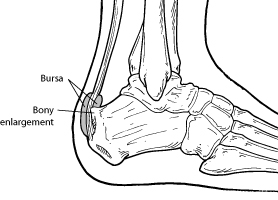What is a Diabetic Ulcer?
Ulcers, which are open sores in the skin, occur when the outer layers of the skin are injured and the deeper tissues become exposed. They can be caused by excess pressure due to ill-fitting shoes, long periods in bed, or after an injury that breaks the skin. Ulcers are commonly seen in patients who have diabetes, neuropathy or vascular disease. Open wounds can put patients at increased risk of developing infection in the skin and bone.
Diagnosis
The signs and symptoms of ulcers may include drainage, odor, or red, inflamed, thickened tissue. Pain may or may not be present.
Diagnosis may include x-rays to evaluate possible bone involvement. Other advanced imaging studies may also be ordered to evaluate for vascular disease, which may affect a patient’s ability to heal the wound.
Treatment
Ulcers are treated by removing the unhealthy tissue and performing local wound care to assist in healing. Special shoes or padding may be used to remove excess pressure on the area. If infection is present, antibiotics will be necessary. In severe cases that involve extensive infection or are slow to heal, surgery or other advanced wound care treatments may be necessary.

